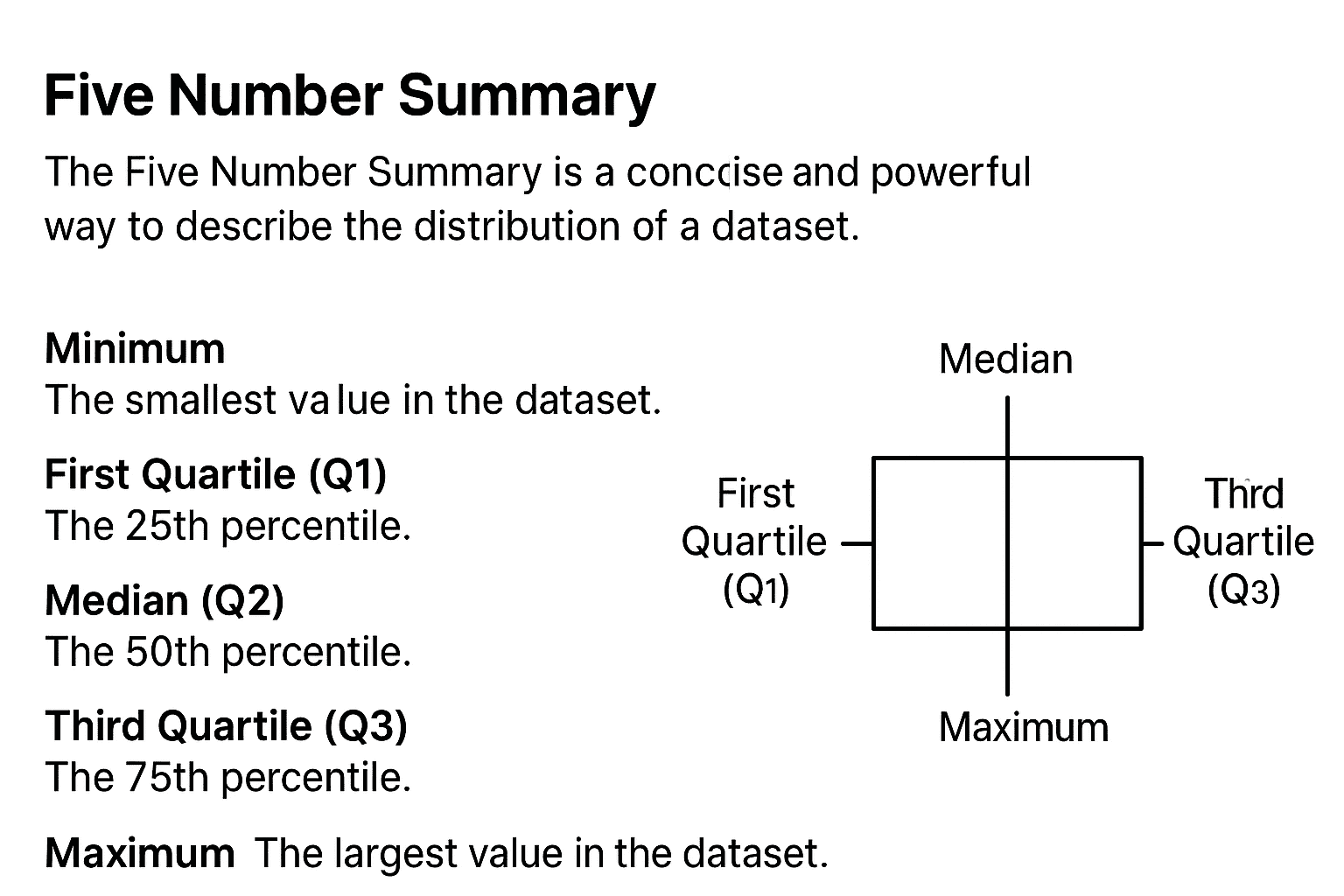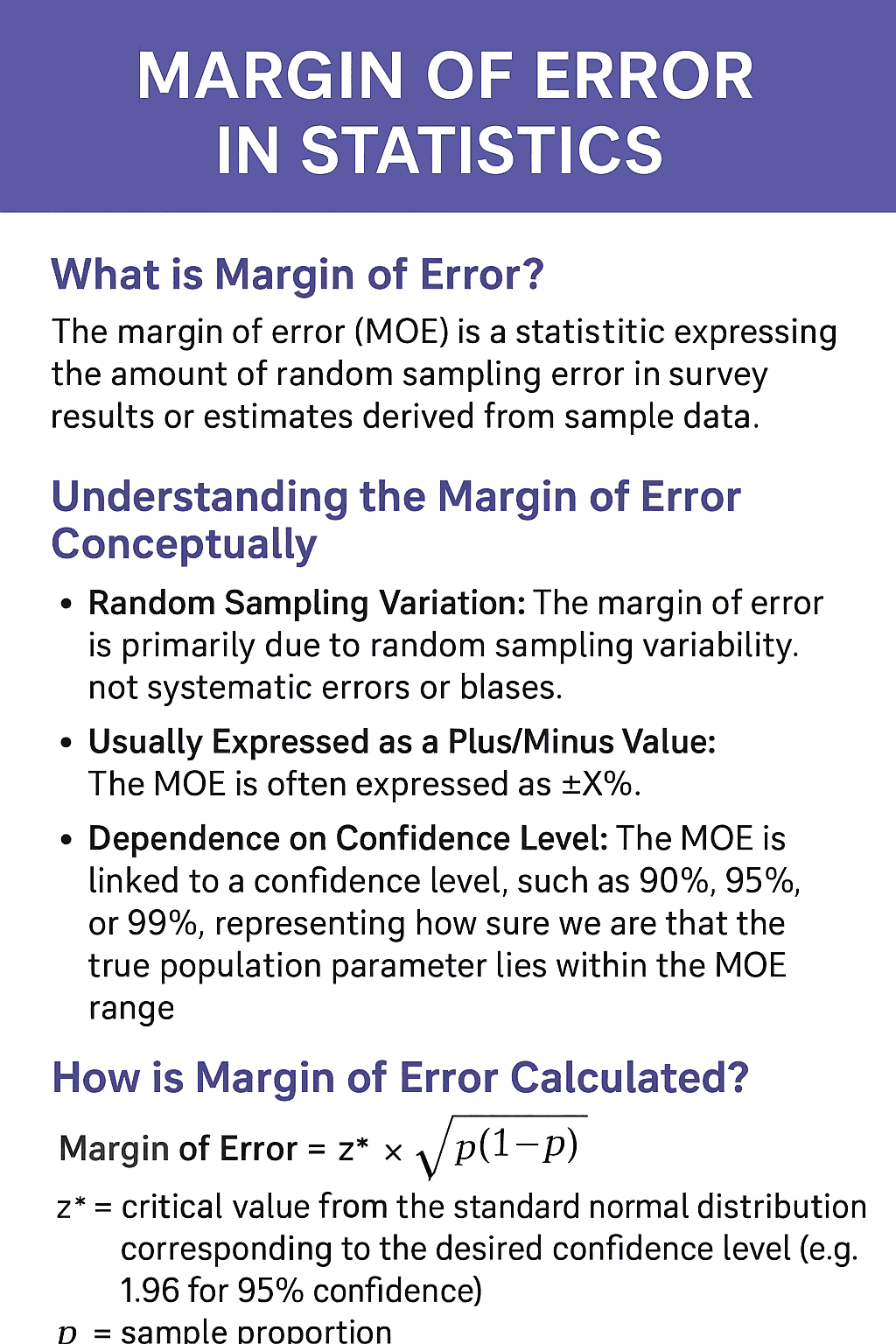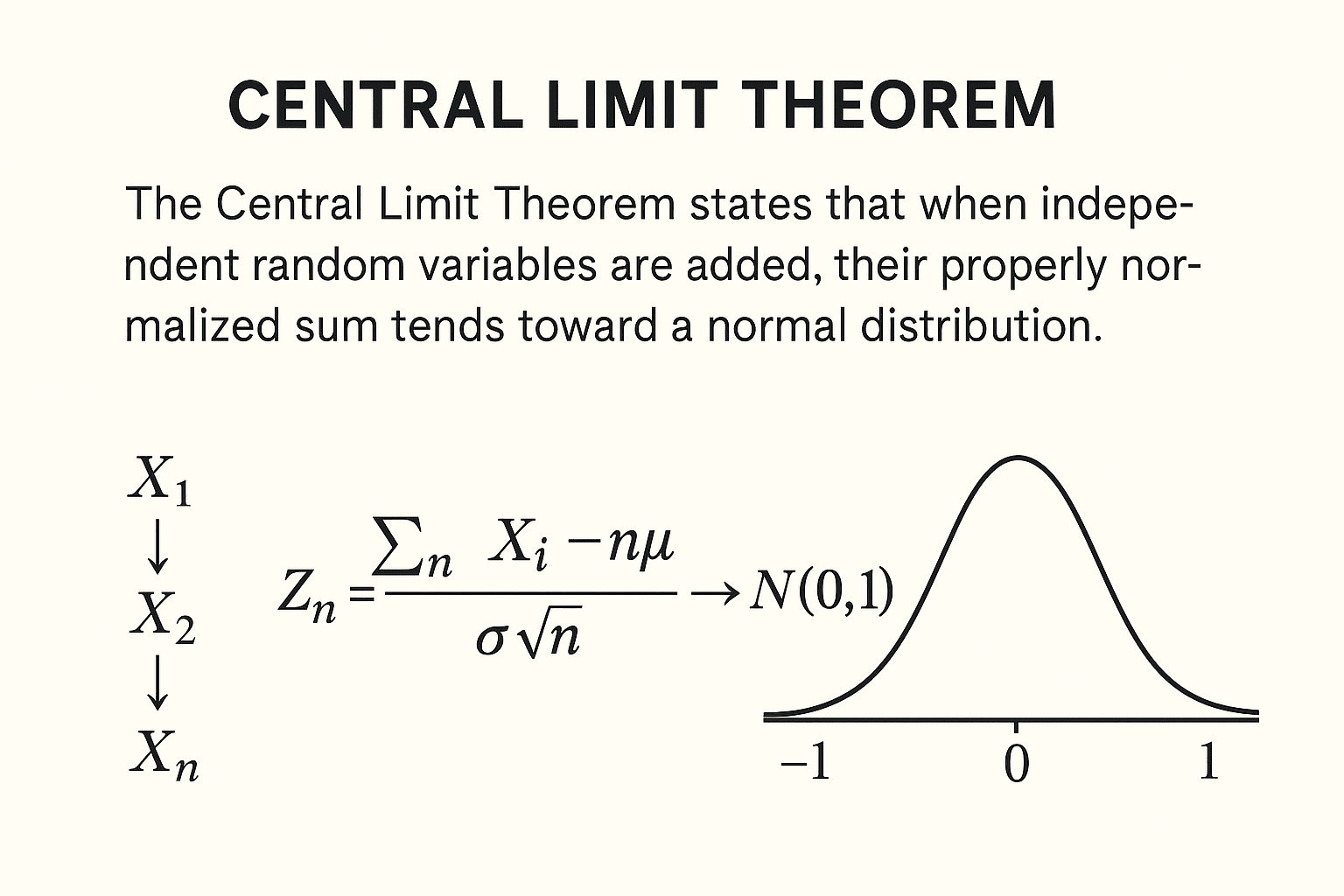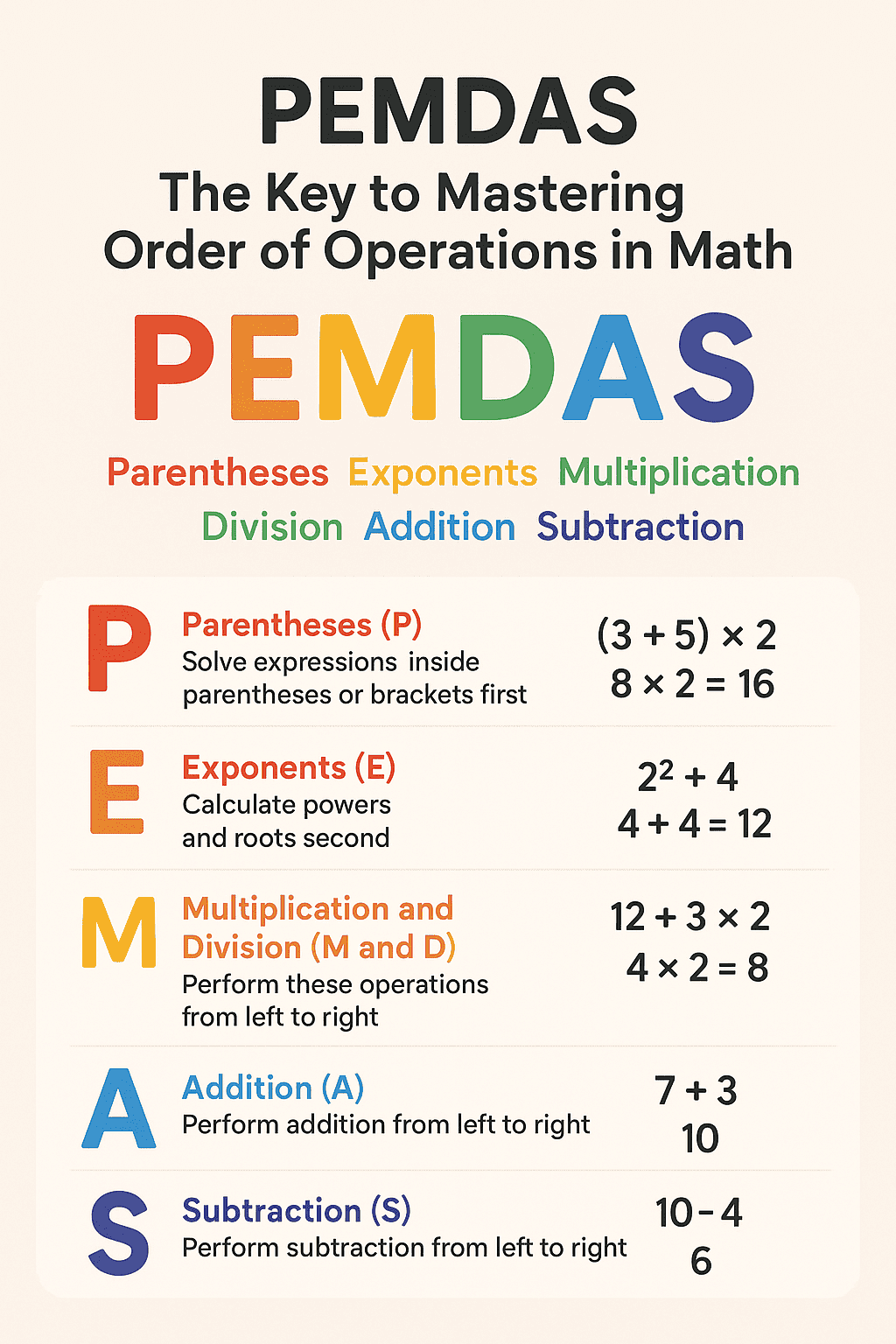Five Number Summary in Statistics
The Five Number Summary is a concise and powerful way to describe the distribution of a dataset. It provides essential information about the data’s center, spread, and overall range, allowing for quick understanding and analysis of the underlying shape and variability. This summary is widely used in exploratory data analysis, box plots, and statistical reporting. … Read more









